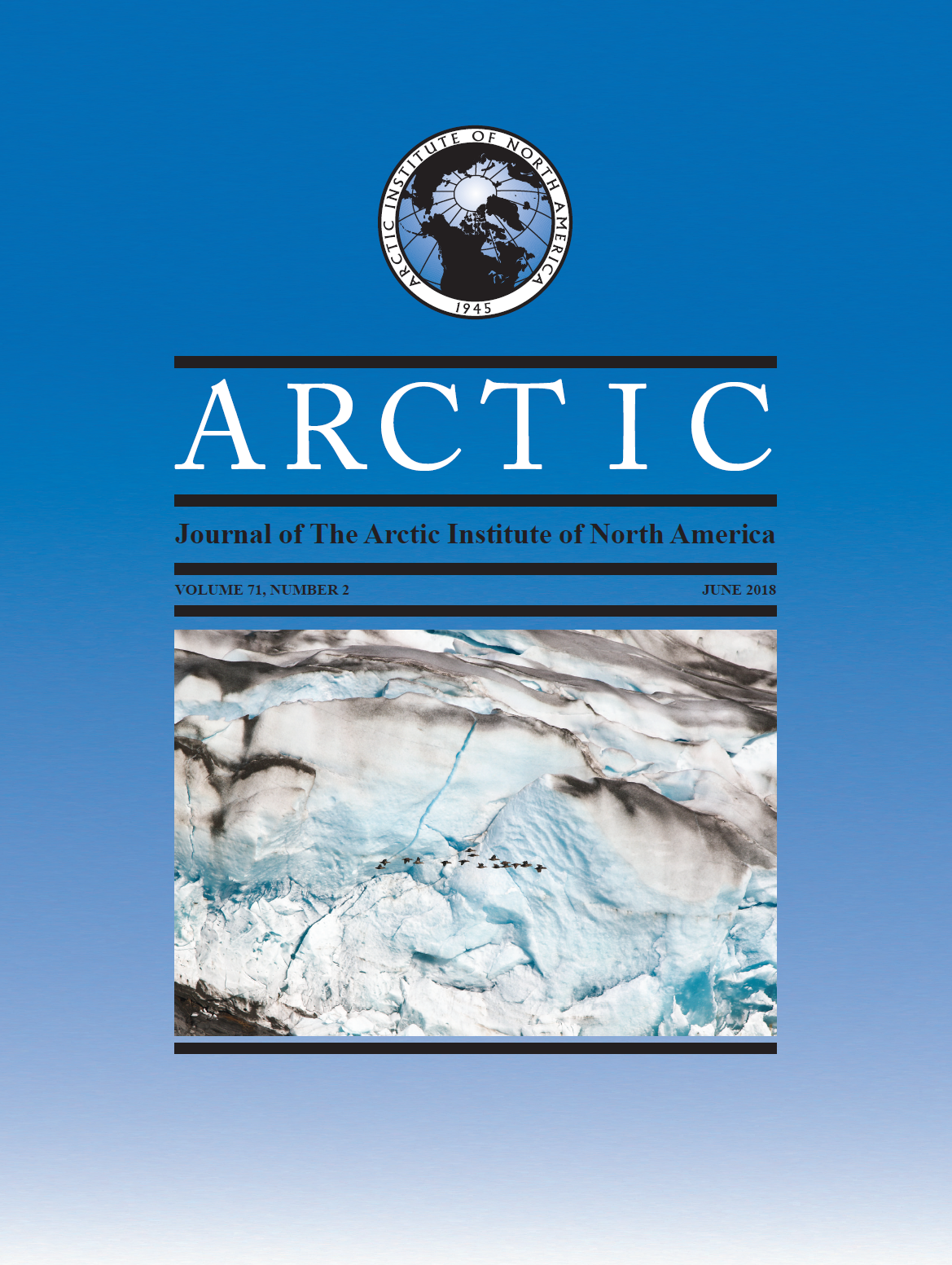“We Used to Say Rats Fell from the Sky After a Flood:” Temporary Recovery of Muskrat Following Ice Jams in the Peace-Athabasca Delta
DOI :
https://doi.org/10.14430/arctic4714Mots-clés :
suivi écologique, mammifères aquatiques, espèce indicatrice, gestion de la faune, changement climatique, aménagement hydroélectrique, Ondatra zibethicusRésumé
Les aînés et les utilisateurs des terres autochtones du delta des rivières de la Paix et Athabasca ont observé une baisse draconienne de l’abondance du rat musqué au cours des dernières décennies (~1935-2014). La principale explication du déclin est la diminution d’abris convenables, et ce, en raison de plusieurs décennies marquées par la fréquence réduite d’inondations causées par des embâcles dans la rivière de la Paix. Dans des conditions favorables, les embâcles peuvent causer l’inondation des bassins perchés au sein du delta des rivières de la Paix et Athabasca qui autrement ne recevraient pas de recharge des eaux de crue. Afin d’examiner si l’abondance du rat musqué dans le delta des rivières de la Paix et Athabasca est favorisée par les inondations, nous avons testé des prévisions selon lesquelles la densité du rat musqué (estimée par le nombre d’abris en hiver) 1) était inversement liée au nombre d’années depuis les dernières importantes inondations causées par des embâcles et 2) augmentait avec la profondeur de l’eau. Un programme collaboratif de suivi continu lancé en 2011, combiné à l’analyse de données des relevés antérieurs (1973-2015), a permis aux utilisateurs des terres autochtones et aux scientifiques de multiplier de 10 à 100 fois la densité d’abris du rat musqué dans 24 bassins, au cours des deux années suivant des événementsd’inondation causés par des embâcles dans le delta des rivières de la Paix et Athabasca. Entre 1973 et 2015, durant les périodes se situant entre les inondations importantes, la densité d’abris a diminué d’environ 79 % chaque année suivant une inondation importante. Dans 27 bassins sondés entre 2011 et 2015, la densité d’abris du rat musqué a augmenté de deux ordres de grandeur au cours des deux années ayant suivi une inondation survenue au printemps de 2014. La densité d’abris du rat musqué avait une relation non linéaire avec la profondeur de l’eau estimée au moment de la prise des glaces en automne; les plus fortes densités d’abris du rat musqué se trouvaient dans les bassins ayant de 60 à 250 cm d’eau au moment de la prise des glaces. La profondeur de la neige au moment des relevés n’avait pas de relation solide avec la densité d’abris du rat musqué. Cependant, nous avons compté peu d’abris dans les bassins comptant plus de 20 cm de neige, probablement parce qu’il était plus difficile d’effectuer des relevés et de trouver les abris dans la neige plus épaisse. Des facteurs autres que l’augmentation de la profondeur de l’eau au moment de la prise des glaces en automne pourraient fournir les mécanismes par lesquels les inondations se répercutent sur les rats musqués. La densité d’abris du rat musqué est manifestement liée aux inondations causées par des embâcles dans le delta des rivières de la Paix et Athabasca. Toutefois, les utilisateurs des terres autochtones comprennent mieux les mécanismes locaux par lesquels les inondations se répercutent sur les rats musqués, tandis qu’ils demeurent mal compris par la science occidentale. Les peuples autochtones continuent de considérer le rat musqué comme un indicateur de la santé écologique et culturelle du delta des rivières de la Paix et Athabasca. Cette étude fait ressortir la valeur d’un suivi écologique constant qui tient compte des connaissances autochtones.


